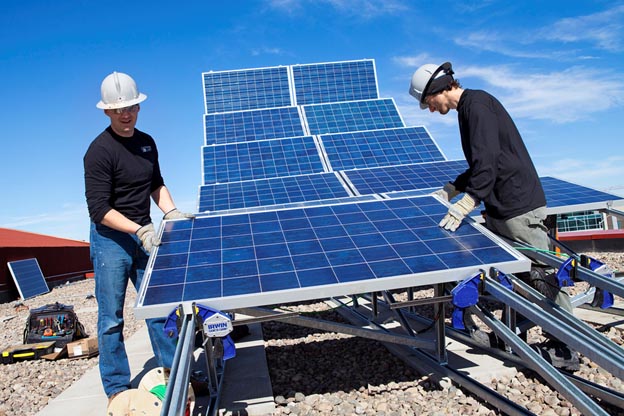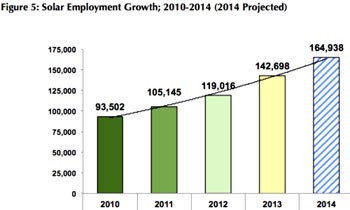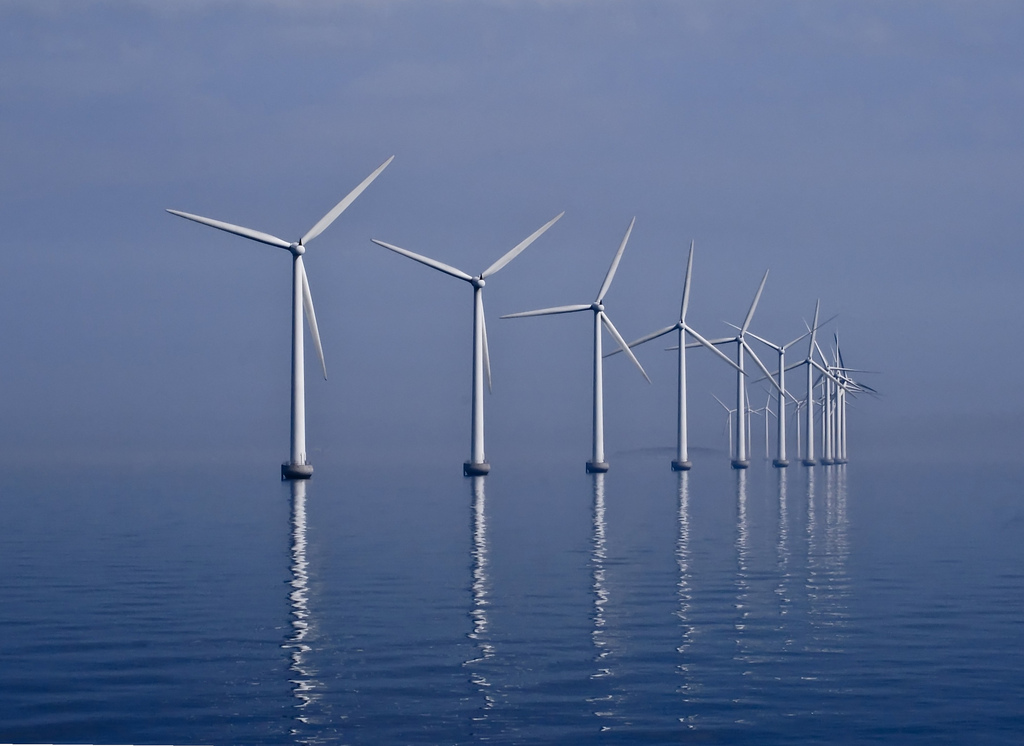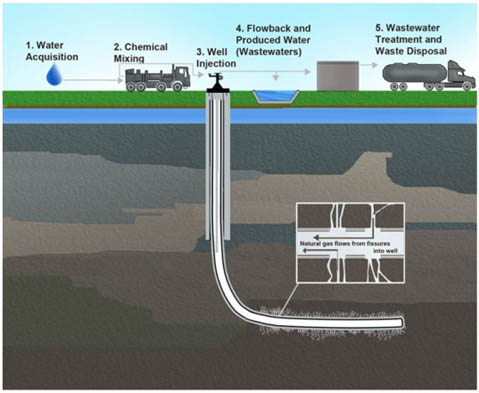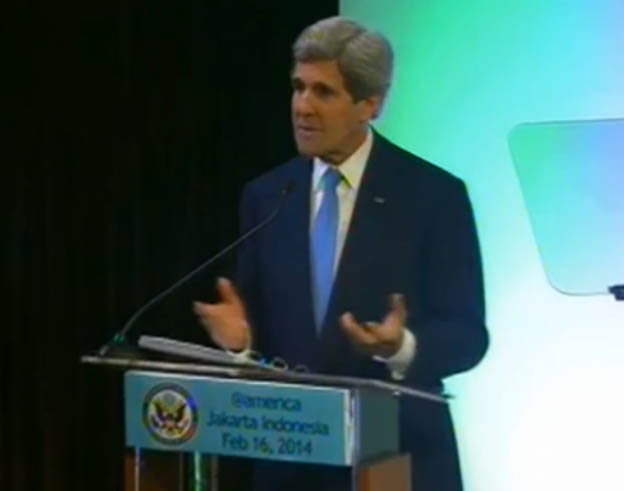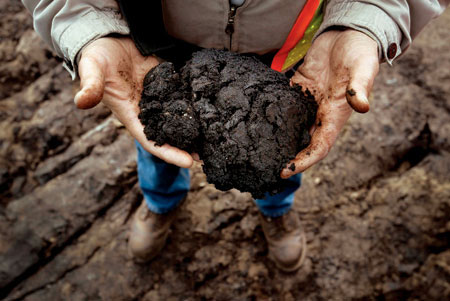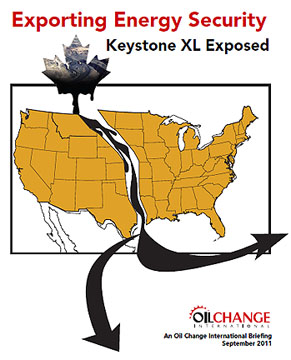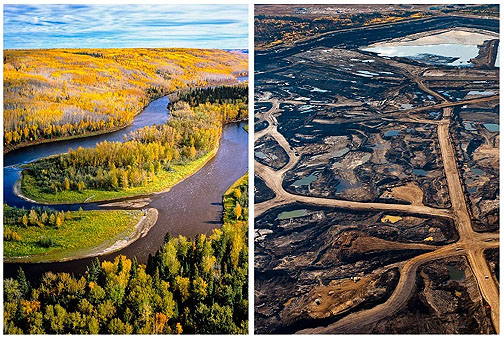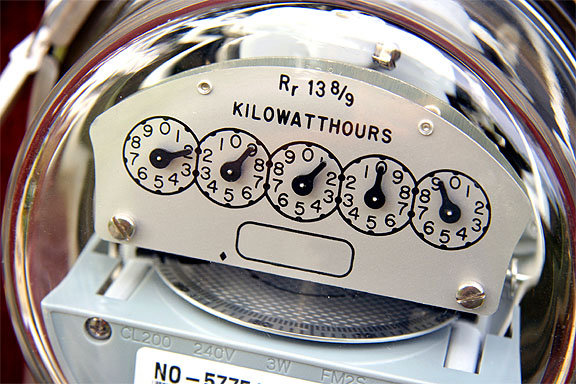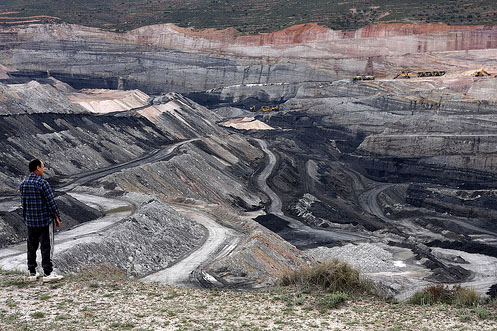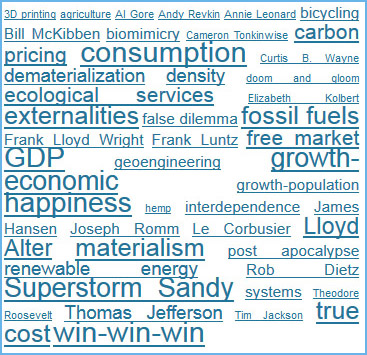
First anniversary gifts are traditionally supposed to be made of paper. That seems thoroughly inappropriate, though, for celebrating an eco-blog’s one year mark. Which is, in EcoOptimism’s case, today.
I suppose it might be interesting to look at how much paper would have been used to create, edit and distribute the year’s worth of posts were this a pre-digital age. (68 posts, not counting this one! And, for what it’s worth, the only paper consumed was a handful of in-office recycled pages and a few Post-Its. Electrons sacrificed, though? That’s another thing entirely.)
I think a different kind of tally is more interesting — and more useful as a type of gauge indicating where the focus and direction has been. To do this, I had to go back and set up something that, had I known, I should have been doing from the outset: creating “categories” and “tags” for each post. SEO is not one of my strengths.
Turned out that having to reread each post in order to create the list of categories and tags, and then analyzing the stats on tag usage was a great way to do a bit of a mission check or, in the famous words of the late Mayor Ed Koch, ask “How’m I doin’?”
In the blog-as-book metaphor, categories are sort of like the table of contents. Creating tags, I learned, is somewhat akin to creating an index – something I was spared in my book, Sustainable Design: A Critical Guide, where the publisher thought a glossary would be more useful for readers. (FYI, a glossary is much harder to do, but also much more fun. Creating definitions is a bit like playing God.) Once I’d created the “index” and logged which posts referenced the topic or person, the blog software kindly gave me the stats indicating how many occurrences there were for each entry. The software also provided me with a “tag cloud” – apologies if you already know this stuff – that graphically renders the stats by type size.
So here’s what I learned. I have a tie for the number of posts referencing “win-win-win” and “consumption.” That first one is a decent indicator that I’ve been pretty good about staying on topic since win-win-win is a reasonable synonym for EcoOptimism. (I didn’t index the term EcoOptimism, by the way. That seemed a little redundant, since pretty much every post includes it, not to mention it being a bit self-referential.) The tying term, consumption, is more useful to ponder. In the post “Answering the Wrong Question,” I discussed the formula I=PxCxT, which says environmental impact is a result of population, consumption and technology. (The formula is more often rendered I=PxAxT, where A stands for affluence, but the term affluence strikes me as both judgmental and not as accurate as looking at consumption.) This post started out addressing the flawed (as I see it) argument for nuclear power, but then went on to discuss the demand for energy and its relationship to consumption. That, in turn, brought up a point I often drill into my students: “It’s not just about climate change.” Quoting myself further (hey, it’s my anniversary so let me indulge):
[S]imply solving the energy issue with low-carbon sources … won’t make everything hunky-dory. It won’t solve resource depletion, water shortages, loss of biodiversity or numerous other ecological impacts. Moving away from fossil fuels doesn’t diminish the amounts of materials needed for all the stuff demanded by 10 billion people desiring to live as Americans do. It doesn’t reduce the staggering amounts of material we throw out daily. It doesn’t eliminate the toxic runoff from industrial farming …. It doesn’t change either P or C or T.
Thinking about this some more, that last point seems to indicate that something is missing from the I=PxCxT equation. It doesn’t take into account the sources of energy consumed and their relative effects. Environmental impact may not be only about climate change, but climate change as a result of using carbon-based energy is certainly a major – if not the major – factor. Perhaps then a better formula would be I=PxCxTxEC, where EC is short for energy from carbon. (Anyone got a suggestion for a single letter instead of EC? Maybe F for fossil fuels?)
Hmm, I thought this post was just going to be self-reflective. Now it seems to have expanded to propose revising a basic tenet of environmentalism. As my mother-in-law would say: “Go know.” My slightly more current version is “who’d a thunk.”
Returning to the stats on tags, the next tie is a neatly correlated one between “happiness” and “GDP.” Actually, the correlation between happiness and GDP is not a “neat” one, but is more like diminishing returns. As a poor country’s GDP increases, happiness in the form of wellbeing tends to increase with it. Basic needs like food and shelter become more available as do education and medicine. But that doesn’t continue to hold true. After a point, one which we in the US have surpassed, rising GDP fails to accompany increased wellbeing and, in fact, has the opposite effect. Gauges of Western wellbeing and happiness show decreases since roughly the middle of the twentieth century. Often this is explained in terms of the “hedonic treadmill.”
I’ll spare you a line by line further analysis of the tags; you can get a visual idea from the tag cloud above. Of note, I think, is that so many of the highest ranked tags relate not to design, but to economics. In addition to the ones already noted, there’s carbon pricing, ecological services, externalities, free market, economic growth, and true cost. As an architect and ecodesigner with a background in economics, I’d like to see more emphasis here on looking at the relationship of the quality of our built environment on environmental impact as well as the quality of the environment on human wellbeing.
It’s worth noting that Superstorm Sandy rates a large font in the graphic above, ranking only slightly below the top two ties. Perhaps relatedly, if you were to tally the categories (as opposed to tags) that each post falls under, the clear leader would be “Messaging.” Several of the 68 posts thus far have pondered why environmental issues and causes are having such a difficult time garnering public support: is it a matter of taking the wrong tactics to communicating the problems? How we approach this question goes to a core of EcoOptimism’s purpose. One way that climate disruption or other eco topics will rise to greater attention is when the reality, the fear, sets in. Sandy was seen by many as a harbinger.
But clarion calls may come too late. The disruptions set in motion by then may, like the proverbial train, take too long to stop, let alone reverse. EcoOptimism says, rather than build the demand on fear, build it on desire by establishing that the actions we need to take are actually steps that we want to take because, aside from the environmental benefits, they will improve our lives.
